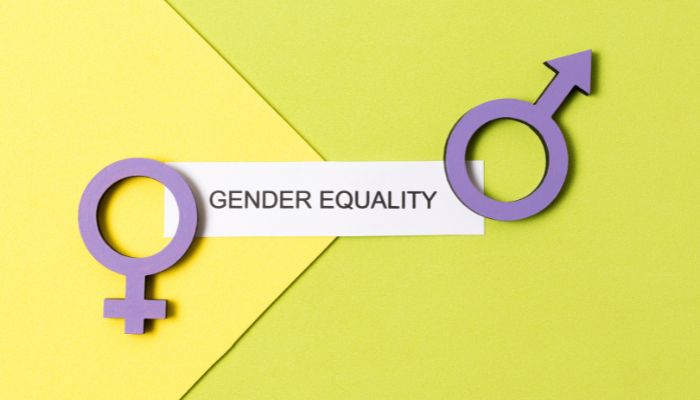Gender equality in leadership at the moment is volatile and ephemeral – it cannot be said to be consistently present nor is it wholly absent. However, the many benefits of gender equality in leadership have been understood recently by India Inc. Boardrooms balancing genders and representatives from diverse communities make more inclusive, sustainable decisions and win the favor of the larger community by being humane in the full sense.
Leaders are essentially chosen because they bring in the leg-work as well as the abstract visionary quality that takes organizations forward despite challenges. Corporate India is on par with global statistics, or even better than several countries, with women executives or senior managers sharing 39% of the pie chart against the global average of 31%. As a broad stroke, this shows that the Indian top brass is “woke” to the fact that women make good leaders. Gender equality in leadership ensures that a balanced band of leaders makes it to the most crucial positions in the organizations.
You might also be interested to read: Women In Technology: These Factors Weigh Them Down
The time is right for a closer look at gender equality in leadership roles and gender balance at the workplace. Why? It’s because India Inc. is already trying to make gender equality in leadership a reality: business concerns with at least one woman in a senior management role count to 98% in India against the global average of 90%. The report by IBM on “First Movers”, companies that not only recognize the benefits of gender equality in leadership but also take the steps towards bringing about the numbers in real-time execution, shows that the gains are real and long term. It is titled “Women, leadership, and the priority paradox” and touches upon how paying lip service to gender equality in leadership does not cut it and examines the reasons for fewer promotions among women in comparison to men to leadership positions. However, the report also presents the flipside of the efforts at gender equality in leadership: there are still a whopping majority of businesses that do not make the advancement of women into leadership a formal business priority.
The prime movers behind gender equality in leadership:
Dearth in quality leadership: Companies struggle to attract and retain top talent. Promoting good leaders is one way to ensure retention. Companies naturally are forced to promote good leaders without regard for their gender, among other things. This is a sure but subtle pressure to bridge the gender gap in leadership.
Positive association with ideal values: Companies with a women-friendly environment enjoy better patronage among consumers and vendors. These companies are seen as upholding progressive views and working towards balanced community participation, and other businesses are proud to be associated with them.
Direct links to profitability: Gender balance in the workplace has been found to correlate directly with companies’ performance on the profitability and revenue metrics among publicly traded companies in 91 countries.
Legislation speaks too: The Companies Act, 2013 of the Indian Company Law brought about an amendment on 29th August 2013 that all publicly traded companies in India need to compulsorily have at least one woman director.
The Egon Zehnder Global Diversity Report 2020 shows that women directors on boards of Indian companies have grown by 8.6% since 2012, standing currently at 17%. This report, which surveyed 48 Indian companies along with companies in 43 other countries, showed that Indian woman directors carry out 5% executive posts and 10% non-executive posts, which is still better than the Asian average of 2.6% and 5% respectively.
While these statistics are encouraging, the indications for flag bearers of Indian corporate ethos are clear: the time for dipping toes into gender balance is over. The response is overwhelmingly positive and enjoys support from all quarters. The time to make a policy decision in favor of strengthening the numbers in gender balance has been reached and remains to be executed.
References:
- Women, leadership, and the priority paradox | Research Insights – IBM Institute for Business Value | Michelle Peluso, Carolyn Heller Baird and Co., | March 2019
- Indian Women rank ahead of Global Peers in Leadership Roles | Livemint | Kalpana Pathak | March 2021
- Women hold 17% of board positions in corporate India, but only 11% leadership roles | Forbes India | Divya J Shekhar | December 2020
- Here’s why companies should have a woman in an executive role | Business Insider | Preeti Soni | March 2020
- GOVERNANCE AND WOMEN’S LEADERSHIP* | ICSI.edu | Student Company Secretary | March 2021
You might also be interested to read:






